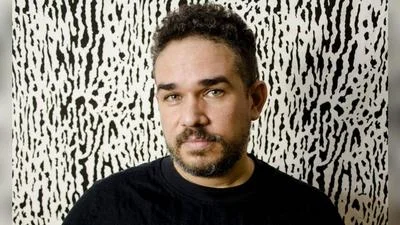Mayor Michael Hancock | Michael Hancock Official Website
Mayor Michael Hancock | Michael Hancock Official Website
DENVER – Denver’s Department of Transportation and Infrastructure has released its updated Vision Zero Action plan, placing greater focus on specific locations where more fatal and serious injury crashes are occurring and establishing priorities to counter what has been an upward trend in fatal and serious injury crashes on Denver streets.
Action Plan Priorities
Priorities listed in the updated action plan include:
- Protecting vulnerable road users with a focus on people who walk, bike and use micromobility and motorcycles.
- Targeting arterial streets and specific segments of these streets where more serious crashes are occurring, as well as places where pedestrians, bicyclists, people using micromobility devices and motorcyclists are disproportionately at risk of dying or being seriously injured.
- Improving street design to force safe speeds and use technologies such as traffic safety cameras to encourage safe driving behaviors.
- Engaging in dialogue with local communities to bring about a new culture of safety that reduces hazardous driving behaviors.
- Collaborating across agencies.
- Noting that public transit is a safer alternative to driving in Denver (there were no recorded deaths in the past five years for people using transit), support and influence the design of more bus rapid transit corridors on the city’s high injury network to make travel by bus more attractive and efficient and encourage a shift away from travel by car.
Introduction of a “Tiered” High Injury Network
The city’s Vision Zero Action Plan released in 2017 established that most fatal and serious crashes are occurring on Denver’s high-speed, multi-lane arterial streets that make up what’s called its High Injury Network (HIN). The new plan creates “HIN Tiers” to prioritize certain segments of these arterial streets that are more dangerous than others. See attached graphic titled HIN Tiers and segments of roadways shown in red.
Vulnerable Road User Analysis
The updated Vision Zero Action Plan analyzes where people that are walking, using a bike or micromobility device, or riding a motorcycle are disproportionately impacted by traffic crashes to develop mode-specific corrective actions. The attachments titled “Vulnerable Road User Crashes” and “Motorcycle involved crashes” show where crashes involving people that walk, bike, use micromobility or ride motorcycles are clustered and occurring more frequently.
Vision Zero Safety Focus Areas
The updated action plan establishes “Safety Focus Areas” where a disproportionate number of deaths and serious injuries are occurring and where DOTI will be exploring opportunities to add greater safety improvements (see attachment). These focus areas include:
- Downtown Denver; while only accounting for 2% of the city’s land area, downtown accounts for 20% of fatal or serious injury crashes.
- South Federal Boulevard Corridor (Alameda Avenue to Yale Avenue)
- East Colfax Avenue Corridor (Park Avenue to Colorado Boulevard)
- South Broadway/Lincoln Street Corridor (Colfax Avenue to Alameda Avenue)
In adopting Vision Zero, Denver has rejected the idea that crashes are unfortunate “accidents” and instead, accepts that traffic crashes can be prevented by systematically addressing their causes. A few examples of safety projects implemented since 2017 include:
- Creation of a rapid response program where staff identifies circumstances and patterns of crashes and develops recommendations to reduce the likelihood of a crash occurring at the same location again. For example, after frequent crashes at East Colfax Avenue and Pearl Street, DOTI implemented design improvements to reduce vehicle speeds and improve pedestrian safety.
- Targeted safety improvements: Denver continually makes changes to street design to proactively improve safety. For example, DOTI recently upgraded 10 traffic signals along South Federal Boulevard with pedestrian countdown indicators and signal timing that increases stops late at night to reduce speeding. As a result, Denver saw 17% fewer crashes in that area and zero traffic related deaths reported in 2018-2019, down from eight deaths in 2016-2017.
- Santa Fe safety improvements: installation of traffic calming measures from 6th Avenue to Colfax Avenue resulted in a speed limit reduction from 30 mph to 25 mph.
- Five Points safety improvements: Denver installed 37 operational and safety improvements, including bulb-outs, at intersections in the Five Points neighborhood to shorten crossing distances and enhance safety for people walking.
- East 13th/East 14th Avenue safety improvements: Denver installed safety improvements at 21 intersections along East 13th and East 14th avenues between Broadway and Yosemite streets. DOTI added paint and posts to these intersections to shorten pedestrian crossing distances, which is anticipated to have a secondary effect of calming traffic, including slowing vehicle turning speeds from 13th and 14th avenues onto neighborhood streets.
- Installation of more than 137 miles of new bike lanes, 88 miles of sidewalks, signal operations improvements at 241 intersections, and 67 new or upgraded pedestrian crossings.
The updated Vision Zero plan lists actions the city team will take over the next six years (from now through 2028) to reduce the incidence of deaths and serious injuries on city streets. The actions are grouped into 14 categories listed below and can be studied in greater detail here.
- Develop and implement DOTI safety policies
- Create and implement Safety Focus Area plans
- Develop a citywide speed reduction team
- Develop a citywide crash management team
- Develop a citywide transportation safety evaluation program
- Work with DOTI's Transit Program to couple transit investments with safety improvements to strategically transform the HIN
- Increase use of traffic safety cameras (speed and red-light cameras)
- Create and implement a “car-free zone” or “slow zone” implementation guide
- Develop a quick-build safety remediation program
- Support build-out of the pedestrian, bicyclist, micromobility and transit user network
- Create a multimodal safety curriculum for K-12th grade
- Conduct targeted community outreach and education to improve traffic safety
- Support community-led placemaking and traffic calming initiatives
- Make the City and County of Denver a model Vision Zero adopter
Original source can be found here




 Alerts Sign-up
Alerts Sign-up